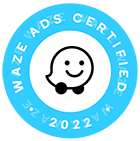
By: Richard Rutigliano, PriMedia, Inc.
Customers will stick with companies who offer them more
When you think of equipment sales, you probably think of boilers, furnaces and central air conditioners. After all, that’s where the money is.
While there are, of course, many benefits to promoting the sale of these big-ticket items, if these are all you focus on, you are losing money and customers.
When you think of equipment sales, you should be thinking of cross-marketing other divisions such as indoor air quality and generators, as well as ancillary items within the HVAC sphere, from burners to thermostats and even filters.
Why bother with these smaller sales? Because every sale brings your customers closer to your company, builds trust, and sets the stage for your company to be the only company they consider when the time is ripe for a new heating system. Failing to do so opens the door for your competitors to walk in.
Making Your Company Sticky
Several years ago, when the industry was facing drastic losses in market share, competition from other energy sources and volatile fuel prices (sound familiar?), PriMedia began discussing the importance of home heating companies offering diversified services so they could “own” the home: providing solutions for every room and every need and thus keeping competitors out. This made the company “sticky.” Customers “stuck” and turned to the company for service and equipment questions. The more services provided, the more sticky the relationships between company and consumer.
The dates on the calendar page may have changed, but the underlying issues have not. Over the years, most home heating companies have diversified their services to include air conditioning, energy audits, duct cleaning, weatherization, indoor air quality, generators, plumbing, propane, and/or electrical services, among other services. Each of these business lines offers an opportunity to sell equipment, an opportunity to be more sticky, an opportunity to expand its base.
Audit First, Sell Later
A home energy audit can create a blueprint of repairs and upgrades for the homeowner and lay out a sales strategy for the company. If your company is BPI, ASHRAE or AEE certified or otherwise authorized as a “Qualified Home Energy Auditor” by the Department of Energy, the customer could be eligible for a federal tax credit of up to 30 percent (maximum $150) of the cost of the audit under the Inflation Reduction Act’s (IRA) update to Section 25C of the Internal Revenue Code. The tax credits and long term efficiency savings should be highlighted in your marketing.
With the audit in hand, you can advise the customer of their next steps – many of which will fall within your purview and may also be covered by federal or state tax credits, rebates and other incentives. It will be important for company management and sales teams to keep track of local and federal guidance on the IRA’s state-managed rebates as the information becomes available. Much of this will come from your state associations, as eligibility and values will be determined at the state levels. Companies whose service areas cross state lines will need to be conversant with each locality’s programs.
The current administration has made no secret of the end goal for these rebates. States are advised to create “envelope-first, heat pump ready” rebate programs for the IRA rebate funds. Regardless of the equipment that may eventually be installed or upgraded, it all starts with the audit and the envelope weatherization services. Insulation and weatherization services are both included under the Home Efficiency Rebates, and are services that many Oil & Energy readers provide. They are also actions that most heating providers recommend to customers looking to reduce their energy costs, and as such, are a logical first step as you guide your homeowners through the efficiency process.
Air Quality Concerns
In June, the Northeast experienced record-breaking levels of particulate matter in the air from smoke coming from wildfires in Canada, and it is still affecting air quality in areas across the Northern and Northwestern regions of the country. The orange skies, scratchy throats, pervasive odors and layers of soot that we experienced first hand are not going to be forgotten quickly. Discussions surrounding air quality were suddenly, starkly, real.
For years, we have been telling consumers that “the air inside your home can have more pollutants than the air outside.” This summer, they were told to close their windows against the smoke from fires thousands of miles away. If your company offers indoor air quality solutions, these are concerns that can be resolved by your air purification and cleansing systems. How strongly did you discuss air quality in your customer communications? It’s not too late. Consider blogs, social media posts and web page updates reflecting the crisis. If available, show before and after photos to reinforce the benefits of air purification.
Powering Through with Generators
Blackouts are always a concern, but in the past, many homeowners weighed the cost for a whole home generator against the “discomfort” of “a few hours without power,” and held off. Extreme weather events now cause outages that last days or even weeks. The “electrify everything” movement, coupled with shutdowns of coal and nuclear power plants, has pushed energy generation plants beyond the breaking point, and it will only get worse. The utilities as well as oversight councils have already begun implementing rolling blackouts during high demand periods and are warning that they could soon become the norm rather than the exception. In plain terms: high demand periods will no longer be concentrated solely on air conditioning and cooling systems battling extreme heat. High demand will also occur during cold snaps and winter storms due to the increase in electrified home and industrial heating.
Your customers understand the risks of extended power outages. The dangers from extreme heat or cold to everyone in the household, but most especially the elderly, infants or ailing, as well as to their beloved pets who might not be allowed in warming or cooling centers. The loss of hundreds or thousands of dollars worth of perishable and frozen foods. The increased likelihood of trips and falls, or thieves and vandals taking advantage of the cover of darkness. Family stress from too much time and too little to do.
If the underlying maxim of marketing is to find a problem and provide a solution; then the breakneck speed of electrification is a gift to companies who sell and install whole home generators. The timing of campaigns can be scheduled around anticipated weather events: a few days prior and several weeks aftwards, and programmatic targeting can be pinpointed all the way to the property address level as well as targeting to specific zip codes or individuals visiting websites for information on how to get reimbursed after an outage.
Be the Informed Choice
In one sense, there are more obstacles today than ever before to closing equipment sales. In addition to rising costs and an uncertain economy, equipment sales representatives have to answer questions about the environment, aggressive anti-liquid fuel legislation and even community opprobrium.
We addressed these concerns in “Marketing to the Messy Middle” in the July 2023 issue of Oil & Energy. In summary, the strongest marketing message for new liquid-fueled heating systems is that they offer an immediate solution to an immediate problem.
The utopian future of abundant electricity, generated from renewable energy and supported by a reliable and extensive distribution system, is decades away. The reality is that despite increases in renewable electric generation capacity, the majority of power is produced from fossil gas, and that power plants are the country’s largest emitters of carbon and other greenhouse gases. The reality is that the cost of high-efficiency cold climate heat pumps, heat pump water heaters, power upgrades and other home modifications is much higher than the cost to upgrade to a high efficiency liquid-fueled system.
The messy middle is the spot between where we were and where we’re going. It’s not perfect, but it is often the perfect solution for the moment. Consumers can be reassured that upgrading is a responsible choice: new heating equipment will cut their energy use by approximately 100 gallons or more per year; and that they will reduce their carbon footprint by more than one ton of carbon emissions each year. As the blend levels rise in their delivered fuels, the benefits to the environment increase, and our fuels are well on the way to reaching net-zero carbon emissions.
Most consumers are cynical in nature, and as such, this message will only be considered when it comes from a company that has already earned their trust. That trust is earned by providing solutions to many of their home comfort problems year after year. That trust is given to a company that has stuck by the customer, and in doing so, made themselves “sticky.”
Richard Rutigliano is President of PriMedia, Inc., an integrated marketing and communications firm specializing in the home energy sector. He can be reached at 516-222-2041 or rrutigliano@primediany.com.















